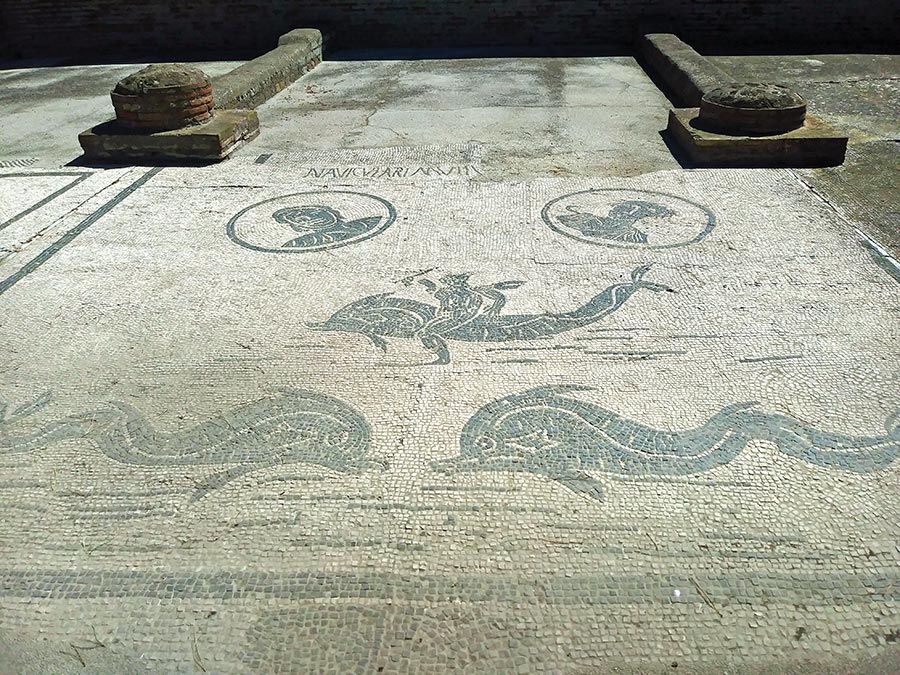Having recently toured the impressive ruins of Rome’s early port, Ostia, on the coast of Italy, I marveled at the use of mosaics to advertise different vendors and stalls, even the occupations of home owners. The ancient port is on the Tyrrhenian Sea, which is part of the Mediterranean. Its location near the mouth of the Tiber River made it a busy seaport in ancient times as ships from many Mediterranean nations unloaded goods there and took on much cargo for transport elsewhere. The fact that Rome was 20 miles up the Tiber from Ostia protected Rome from raiders for centuries.
Dating back to hundreds of years B.C., the ancient port has been well preserved and is, in fact, still being studied by archaeologists. As one wanders through the well-laid-out and well-described streets, something that one can do in several hours of leisurely walking, one will see a large theater, a forum, two-story houses of merchants and ordinary citizens, a 20-hole public latrine, and dozens of black-and-white mosaics. One can easily imagine how ancient Romans lived there over 2,000 years ago.
Because of the silting up of the Tiber and an outward expansion of the coastline, the town has long been abandoned and now lies about two miles from the sea. But one can still see in the Baths of Neptune, a mosaic of Neptune riding in a chariot pulled by mythological seahorses. Other mosaics of interest to readers of this publication, i.e. those who want to know more about nautical themes and different kinds of fish, include sea nymphs and tritons, which were mermen. Town merchants would also display on the pavement outside their shops mosaics of their products, ships, marine supplies, goods imported and for sale, all a form of ancient advertising. And, while many mosaics have been taken off to the safe, environmentally controlled museums of Italy, enough remain to delight the visitor. Also, because Ostia is a half-hour train ride from the center of Rome, far fewer tourists make the trip, leaving the site relatively peaceful.
Mosaics A Window into the Past
One can easily guess what life was like in Ostia a long time ago and see how important the life of the sea, especially fish, was to the merchants who lived and worked there. The pictures of sea creatures, ships, and fishing activities are so remarkably well preserved that they look as if they were made in the recent past. Most surprising of all, perhaps, are the pictures of elephants, boars and tigers, indicating that the owner of that office was one who imported wild beasts for use in the Roman Colosseum.
One can almost hear the din of sailors, rope-makers, storehouse managers, and vendors filling the air with a cacophony of sounds in different languages. If you ever get the chance to get out of Rome and visit Ostia, you will marvel at the mosaics and well-preserved ruins.

